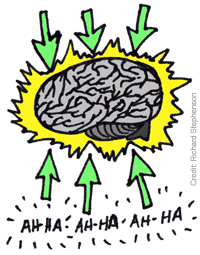As the US Senate begins consideration of the recently introduced Chemical Safety Improvement Act, I want them to think about the brain.
Most of us don’t think about our brains. It’s like thinking about our hearts beating or about the sun rising and setting each day.
The human brain develops in an incredibly intricate and elegantly orchestrated series of events. Brain cells (neurons) divide, migrate, differentiate and communicate. At birth, a baby’s brain has about 100 billion neurons that are in place and beginning to connect with each other, sending and receiving messages. The brain continues to grow and strengthen connections throughout childhood.
Wow. That’s a lot happening in just nine months. But that’s not the part I really want our Senators to think about.
Neuroscientists have discovered that there are critical “windows” of vulnerability when the pregnant woman’s exposures to toxic chemicals can cause lasting harm to the baby’s developing brain. These windows exist only in early brain development; they have no counterpart in adult life.
That means the developing brain is uniquely vulnerable to harm from toxic chemicals, and needs to be uniquely protected. That’s what I want our Senators to think about as they figure out how to ensure that this new bill actually does what it’s supposed to: assess chemicals for safety to human health, identify which ones are toxic and prevent their use in products.
As currently drafted, the Chemical Safety Improvement Act has fundamental flaws. The bill outlines all sorts of onerous procedures and processes the EPA has to wade through at every step of assessing chemicals to determine their safety. At the same time, there are few deadlines for EPA to complete assessments and take action on chemicals identified as toxic. It doesn’t take a policy expert to know that endless loops of red tape, combined with the lack of deadlines means not much will happen.
The bill also fails to require that chemicals are found safe for children’s health and development. We need Congress to fix this serious omission by adding a definition of “vulnerable populations” and requiring that chemicals are found safe to a level that is protective of those populations.
In just the last five years, what we know about children’s exposures to toxic chemicals, and the real-life and lasting effects of those exposures has changed dramatically.
A 2011 analysis of the U.S. Center for Disease Control’s biomonitoring data found that at least 90 percent of pregnant women have detectable levels of 163 industrial chemicals in their bodies. Many of those same chemicals have been detected in cord blood of American newborns.
The chemicals found in pregnant women and infants include those most harmful to brain development: flame retardant chemicals found in couches, carpets, building materials and electronics; non-stick and stain-resistant chemicals found in cookware and upholstery; bisphenol A from plastics and can linings; as well as lead and mercury.
Of course, not every baby exposed to these chemicals in the womb or after birth will experience learning or developmental problems. Genes, nutrition, social stressors, timing of exposure – all these factors play contributing roles and interact in ways we are only beginning to understand.
But more children now have learning or developmental disabilities. The autism rate has climbed to 1 in 88 in the U.S. Most experts agree that while some of that increase is due to better diagnosis, some of the increase is real. What those researchers and doctors also increasingly agree on is that environmental factors, including toxic chemicals, are contributing to autism.
Also in just the last five years, we have results from human studies that corroborate decades of laboratory research showing that certain chemicals can interact with genetics to harm brain development. These new and ongoing scientific studies show that prenatal and childhood exposures to toxic chemicals can play a role in the incidence of learning and developmental disabilities, such as autism and attention disorders.
So here’s what we know now, in the summer of 2013, with a bipartisan group of Senators for the first time in almost 40 years working to revise our chemical safety law:
- The developing brain is especially vulnerable to harm from toxic chemicals.
- Pregnant women and infants have detectable levels of toxic chemicals in their bodies.
- Research shows that in some children, these chemical exposures, alone or in combination with genetic susceptibilities, result in life-long problems with intelligence, attention and behavior.
Please, Congress, as you work on this legislation, keep our children’s brains in mind.




